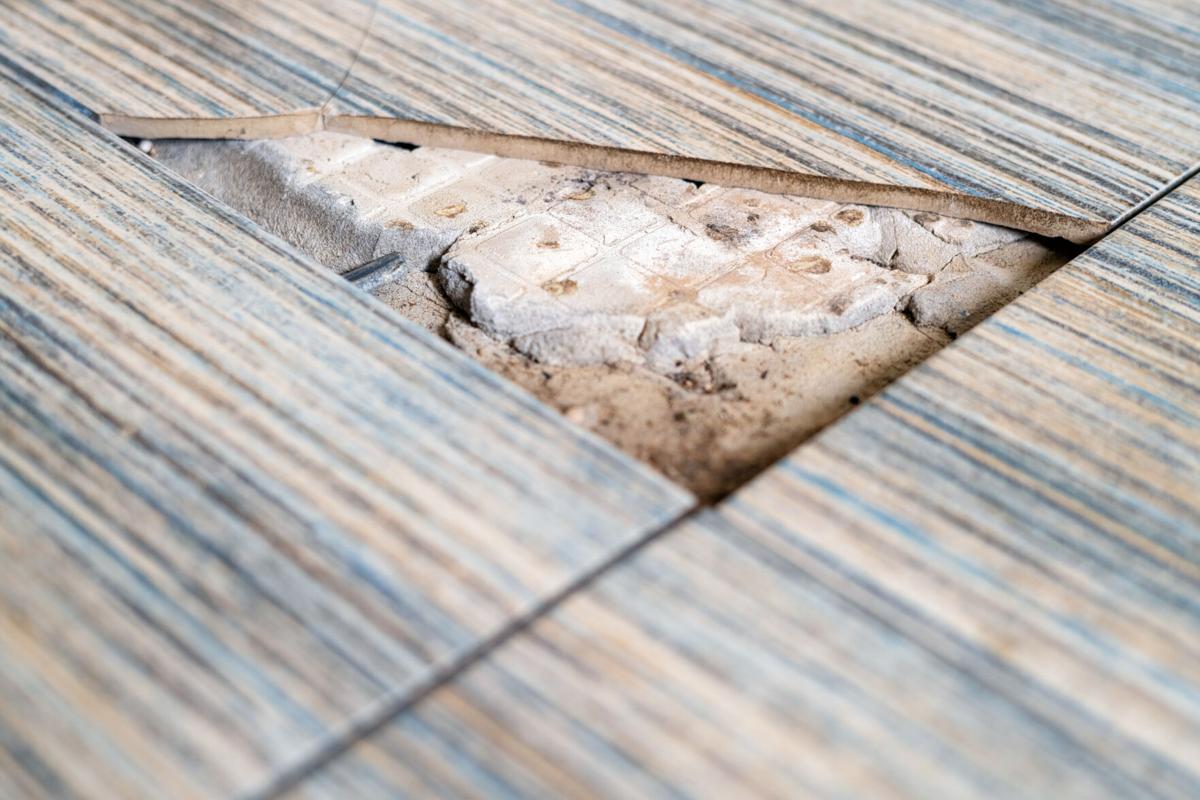Question: What is asbestos, and could it be in my home?
Answer: Asbestos is mineral fiber that was added to a variety of products to strengthen them and provide heat insulation and fire resistance. The Environmental Protection Agency (EPA) tells us that it can be found in:
insulation
roofing and siding shingles
ceiling tiles
vinyl floor tiles
backing on vinyl sheet flooring and adhesives
paper products
cement products
textured paint and patching compounds
walls and floors around wood-burning stoves
hot water and steam pipes coated with an asbestos material or covered with an asbestos blanket or tape
Unless it is labeled, it is nearly impossible to tell whether a material contains asbestos simply by looking at it. It can be positively identified only with a special type of microscope.
Houses built between 1930 and 1950 may have asbestos as insulation. It may be present in textured paint and in patching compounds used on wall and ceiling joints. Their use was banned in 1977.
Homes built before 1978 that have popcorn ceilings could contain asbestos. Asbestos-containing materials may release fibers when they are disturbed, damaged, removed improperly, repaired, cut, torn, sanded, sawed, drilled or scraped. If you are determined to remove a popcorn ceiling or chip paint yourself, which I highly advise against, contact the EPA for a list of safeguards.
Q: What should I do if I think my house has asbestos?
A: The Pima County Department of Environmental Quality says if you think asbestos may be in your home, don’t panic. Usually, the best thing is to LEAVE asbestos material that is in good condition ALONE. Generally, material in good condition will not release asbestos fibers. There is no danger unless fibers are released and inhaled into the lungs.
Check material regularly if you suspect it may contain asbestos. Don’t touch it but look for signs of wear or damage such as tears, abrasions or water damage. Damaged material may release asbestos fibers. This is particularly true if you often disturb it by hitting, rubbing or handling it, or if it is exposed to extreme vibration or air flow.
Sometimes, the best way to deal with slightly damaged material is to limit access to the area and not touch or disturb it. Discard damaged or worn asbestos gloves, stove-top pads, or ironing board covers in accordance with local and federal laws. Check with local health, environmental, or other appropriate officials to find out proper handling and disposal procedures.
If asbestos material is more than slightly damaged, or if you are going to make changes in your home that might disturb it, repair or removal by a professional is needed. Before you have your house remodeled, find out whether asbestos materials are present.
Q: I plan to remodel my house. Do I need to worry about lead paint?
A: If your home was built before 1978, lead paint might have been used during the building of your house.
Common renovation, repair and painting activities like sanding, cutting, chipping and replacing windows, can disturb lead-based paint and asbestos creating hazardous lead dust and chips which can be harmful to adults, children and pets.
The Environmental Protection Agency’s (EPA) Renovation, Repair and Painting Rule per federal law requires contractors that disturb surfaces in homes, child care facilities and schools built before 1978 to be certified and follow specific work practices to prevent lead contamination.
Although the rule does not apply to homeowners renovating, repairing or painting their homes themselves, it is imperative to set up safely, control the dust and clean up completely.
Reduce the risk of lead exposure by hiring a certified lead inspector. If lead is present, it is highly recommended to have a trained and certified lead abatement contractor perform an abatement before you begin work. You can find one at www.epa.gov/lead.
By the way, if your home was built before 1978, and your house tested positive for lead paint, it must be disclosed when selling the home.





